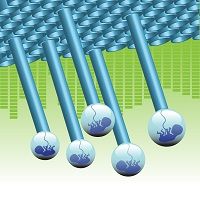Article
Embryo Transfers and Multiple Births: Doing the Math in Reproductive Endocrinology
Author(s):
The American Society for Reproductive Medicine (ASRM) published a 2013 guideline addressing the number of embryos to transfer. Its guideline relied on empiric data to individualize patient care while minimizing the risk of high-order multiple births.

Ever since several highly publicized and probably ill-advised multiple births became fodder for the media, the question of how many embryos should be implanted has been discussed openly. The American Society for Reproductive Medicine (ASRM) published a 2013 guideline addressing the number of embryos to transfer. Its guideline relied on empiric data to individualize patient care while minimizing the risk of high-order multiple (HOM; 3 or more offspring) births. The guideline considers patient age and prognosis also. One gap in the guideline is recommendations for women older than age 42; its authors noted that more study is needed before evidence-based recommendations can be made.
The December 2014 issue of Fertility and Sterility contains two articles that speak to the concerns of embryo implantation. In the first article, “How do we decide how many embryos are safe for transfer?” Richard J. Paulson, MD, from the University of Southern California in Los Angeles reviews mathematical models used to calculate the potential live births following embryo implantation (EI). All models recognize that EI depends on embryo quality (EQ), endometrial receptivity (ER), and transfer efficiency (TE). In most cases, EQ is the dominant factor.
Paulson indicates the ‘‘maximum number of embryos to be transferred’’ is necessarily arbitrary. Multiple implantations are always possible and that leads endocrinologists to ask what level of risk is acceptable. The maximum number of embryos to be transferred must be based on a reasonably low probability of HOM. As women age, empiric data supports transferring a greater number of embryos.
The second article is a study by researchers at Weill Cornell Medical Center, New York, New York. They designed a study to determine to determine the number of cleavage-stage embryos that can be safely transferred to women ≥43 years old. They reviewed 567 cycles in 464 patients aged 43-45 years, whose IVF cycles were characterized by transfer of five to eight embryos.
Women aged 43 and 44 years having 5 or more embryos transferred experienced higher clinical pregnancy rates than those patients receiving 3 or 4 embryos. Transferring 6 or more embryos did not lead to better clinical outcomes than transferring 5 embryos.
Live birth rates per transfer were 14.4%, 9.4%, and 1.3% for women aged 43, 44, and 45 years, respectively. Three patients experienced triplet gestations, with 1 selective reduction and 1 spontaneous reduction. Women aged 43, 44, and 45 years had twins was 16.3%, 6.7%, and 0% of the time, respectively. There were no HOM births.
The researchers conclude that having more than five embryos available for transfer is associated with improved IVF outcomes, but they did not determine if the benefit results from the additional embryo(s) or patient factors improving prognosis.




